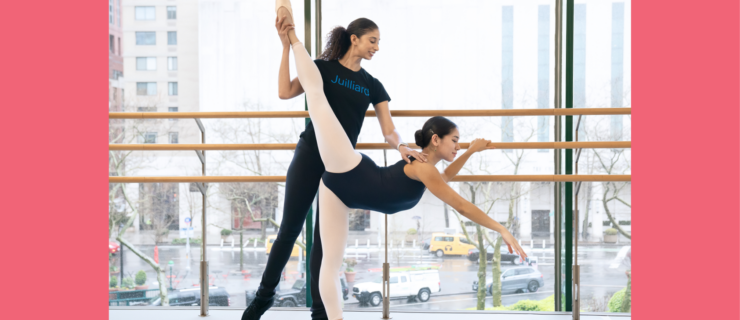Master Tips for a Picture-Perfect Penché
Penché. So simple, yet so tough. Here, San Francisco Ballet School faculty member Tina LeBlanc offers her tips for a beautifully supported penché.
Think three-dimensionally:
“A penché is not just front and back, or down and up,” says Tina LeBlanc. “You’re wrapping the supporting leg, you’re pulling up the tummy, the back is reaching up, the toe is reaching up—you’re expanding in all different directions.”
Eyes up:
For LeBlanc, a tell-tale sign that students will lose their balance in penché is when they drop their eyes. “Your sight is a dominant sense,” says LeBlanc. “When you look down, your sight takes over and you’re not necessarily feeling the shape.” Instead, focus out and over the hand.
Think “up” to go down:
As a dancer, LeBlanc used to imagine a giant ribbon tied around her hips, suspended from above. “The image helped keep my pelvis supported, and I could lean over it. It gives that sense of ‘up’ as you’re going down.” In addition, “feel your back reaching for the ceiling as you go forward.”
 Tina LeBlanc. Erik Tomasson, Courtesy SFB.
Tina LeBlanc. Erik Tomasson, Courtesy SFB.
The back/foot connection:
As you penché, feel the arabesque foot pushing upward as you resist with your back. “Then, as you come back up, your foot is going to resist as your back initiates, all while staying forward in the ball of the foot.”
Keep square:
LeBlanc feels a more squared-off penché yields better results. “If you let your working side open too much, it’s like being on a high wire.” Pull back on your supporting shoulder to help square off.
Feeling crunchy?
To help free up the working side of your back in arabesque, imagine that your leg is coming out of your spine. “If you can create space in your lower back,” says LeBlanc, “it’s a little easier to keep that working leg turned out and lifted because you’re not dealing with flesh or the ribs.”





